BanksyStudy for Happy Choppers 2003 spray paint on found framed oil painting 79 x 109.7 cm (31 1/8 x 43 1/4 in.) This work is accompanied by a certificate of authenticity issued by Pest Control.
Provenance Private Collection, Vienna Dorotheum, Wien, Zeitgenossische Kunst, November 28, 2007, Lot 272 Private Collection, New York Exhibited Vienna, Kunsthalle Exnergasse, Bad Press: Banksy 25 June-26 July 2003 Catalogue Essay An inveterate provocateur, Bansky works under the veil of pseudonymity to create work of visual audacity and satiric potency. With a background in graffiti, much of his work is site-specific, incorporating features of the urban landscape. Whether a figure emerging from behind a telephone box or a stenciled phrase rebuffing a CCTV camera, his pieces respond to and reimagine their surroundings. They prompt both laughter and reflection, challenging authority as they challenge their environment. Even when he isn’t creating street art, Banksy borrows heavily from its methodologies; as he puts it, ‘if you want to survive as a graffiti writer when you go indoors your only option is to carry on painting over things that don’t belong to you.’ (Banksy( Wall and Piece, London: Century, 2005, p.128). Central to his practice is the notion of defacing; his work refashions preexisting objects, be they walls or paintings, with wit and polemic intent. Taking a found oil painting as its base, the present lot makes manifest this aversion to the blank canvas and the neutral space. Whilst its provenance is unknown, the original work suggests the tradition of British landscape painting. It depicts a rather gaudy pastoral scene replete with copses, cottages, and a gently winding river. The painter imagines a kitsch landscape: a rural panorama which Banksy boldly subverts. In the original painting, the heavy storm clouds lend a note of discordance to the work, threatening the serenity of the scene below. Through Banksy’s revision, the discordance is compounded; rendered in blurred yet imposing detail is an Apache helicopter. It hovers in the foreground, pointedly incompatible with the rest of the image. The piece is arresting in its incongruity; spray paint disrupts oil paint, and mechanised warfare disrupts rural quietude. Brutal modernity, Banksy implies, precludes the creation of idealised space. Overlaid with the stark aggression of machinery, the rural scene appears ridiculous in its gentility. Study for Happy Choppers is one of several defaced oil paintings by Banksy,,each of which sees an idealised rural scene debased by an emblem of modernity. In another work, the seclusion of a riverside path falls under the unerring gaze of a CCTV column. Banksy envisages dystopian landscapes in which the dangerous potentials of technology are realised; in these works, public surveillance and military aggression make a mockery of pastoral idylls. The Apache helicopter is a recurrent motif in the reworked paintings, as it is in much of Banksy’s work. A significant part of his aesthetic vocabulary, his stencilled helicopter is often adorned with a yellow or pink ribbon, and frequently signifies the Iraq War. Such is the case in Wrong Way, a street art piece spray painted on a wall in Ladbroke Grove. Rendered in the same blurred detail, an Apache swoops to the left, a yellow bow tied around its rotor mast. Written in Banksy’s now-iconic font, smudged text reads either ‘Wrong War’ or ‘Wrong Way’. The message of condemnation, though, is clear. The present lot shares this sentiment; belonging to a series entitled Crude Oils, it references a contemporary controversy – principally that surrounding the Iraq War. The conflict was the subject of considerable debate, and accusations were made that coalition military action was motivated by Iraq’s supply of oil. The present lot gestures towards this debate; the title refers not only to the materiality of the piece but also to the political climate of the time. The work rebukes authority, putting wordplay and visual effrontery to dissenting effect. This willingness to engage boldly and unapologetically with world events characterises much of Banksy’s work. In 2005, he made a now-famous proclama
BanksyStudy for Happy Choppers 2003 spray paint on found framed oil painting 79 x 109.7 cm (31 1/8 x 43 1/4 in.) This work is accompanied by a certificate of authenticity issued by Pest Control.
Provenance Private Collection, Vienna Dorotheum, Wien, Zeitgenossische Kunst, November 28, 2007, Lot 272 Private Collection, New York Exhibited Vienna, Kunsthalle Exnergasse, Bad Press: Banksy 25 June-26 July 2003 Catalogue Essay An inveterate provocateur, Bansky works under the veil of pseudonymity to create work of visual audacity and satiric potency. With a background in graffiti, much of his work is site-specific, incorporating features of the urban landscape. Whether a figure emerging from behind a telephone box or a stenciled phrase rebuffing a CCTV camera, his pieces respond to and reimagine their surroundings. They prompt both laughter and reflection, challenging authority as they challenge their environment. Even when he isn’t creating street art, Banksy borrows heavily from its methodologies; as he puts it, ‘if you want to survive as a graffiti writer when you go indoors your only option is to carry on painting over things that don’t belong to you.’ (Banksy( Wall and Piece, London: Century, 2005, p.128). Central to his practice is the notion of defacing; his work refashions preexisting objects, be they walls or paintings, with wit and polemic intent. Taking a found oil painting as its base, the present lot makes manifest this aversion to the blank canvas and the neutral space. Whilst its provenance is unknown, the original work suggests the tradition of British landscape painting. It depicts a rather gaudy pastoral scene replete with copses, cottages, and a gently winding river. The painter imagines a kitsch landscape: a rural panorama which Banksy boldly subverts. In the original painting, the heavy storm clouds lend a note of discordance to the work, threatening the serenity of the scene below. Through Banksy’s revision, the discordance is compounded; rendered in blurred yet imposing detail is an Apache helicopter. It hovers in the foreground, pointedly incompatible with the rest of the image. The piece is arresting in its incongruity; spray paint disrupts oil paint, and mechanised warfare disrupts rural quietude. Brutal modernity, Banksy implies, precludes the creation of idealised space. Overlaid with the stark aggression of machinery, the rural scene appears ridiculous in its gentility. Study for Happy Choppers is one of several defaced oil paintings by Banksy,,each of which sees an idealised rural scene debased by an emblem of modernity. In another work, the seclusion of a riverside path falls under the unerring gaze of a CCTV column. Banksy envisages dystopian landscapes in which the dangerous potentials of technology are realised; in these works, public surveillance and military aggression make a mockery of pastoral idylls. The Apache helicopter is a recurrent motif in the reworked paintings, as it is in much of Banksy’s work. A significant part of his aesthetic vocabulary, his stencilled helicopter is often adorned with a yellow or pink ribbon, and frequently signifies the Iraq War. Such is the case in Wrong Way, a street art piece spray painted on a wall in Ladbroke Grove. Rendered in the same blurred detail, an Apache swoops to the left, a yellow bow tied around its rotor mast. Written in Banksy’s now-iconic font, smudged text reads either ‘Wrong War’ or ‘Wrong Way’. The message of condemnation, though, is clear. The present lot shares this sentiment; belonging to a series entitled Crude Oils, it references a contemporary controversy – principally that surrounding the Iraq War. The conflict was the subject of considerable debate, and accusations were made that coalition military action was motivated by Iraq’s supply of oil. The present lot gestures towards this debate; the title refers not only to the materiality of the piece but also to the political climate of the time. The work rebukes authority, putting wordplay and visual effrontery to dissenting effect. This willingness to engage boldly and unapologetically with world events characterises much of Banksy’s work. In 2005, he made a now-famous proclama

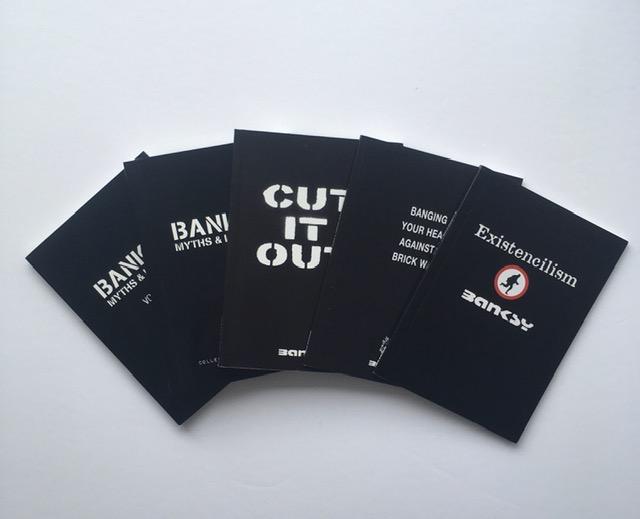
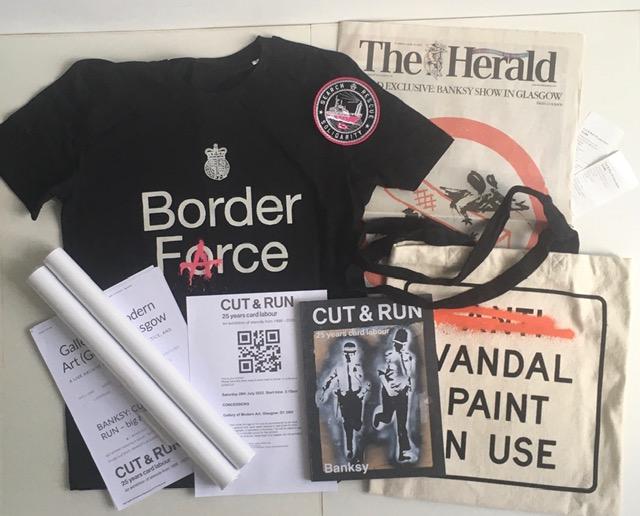
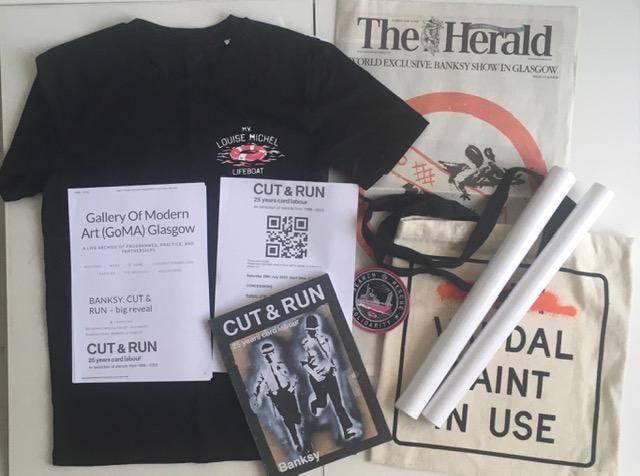
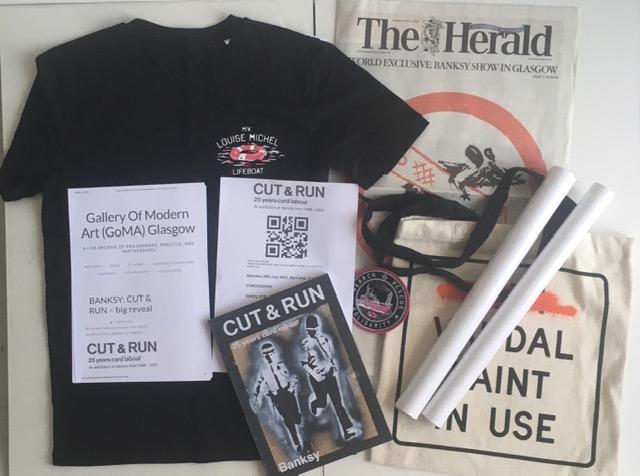
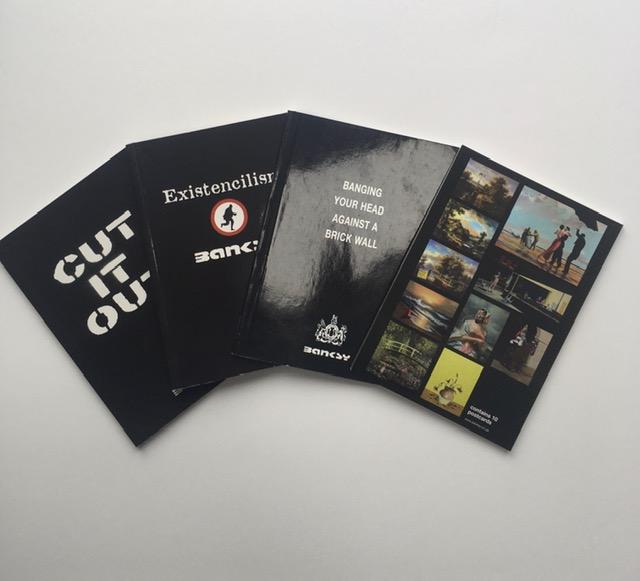
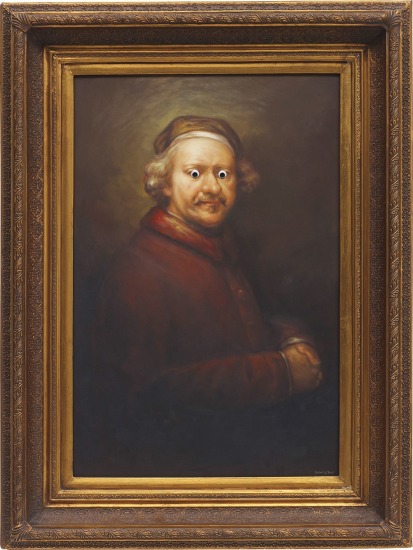
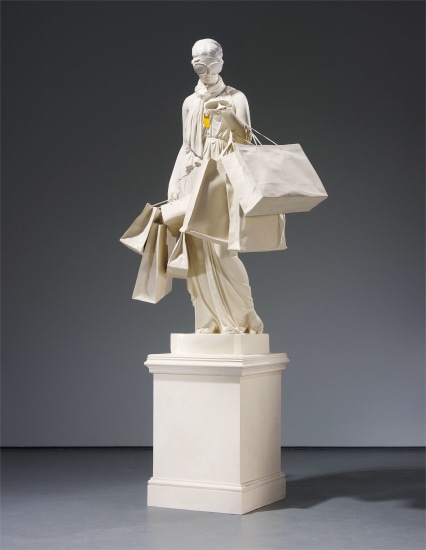
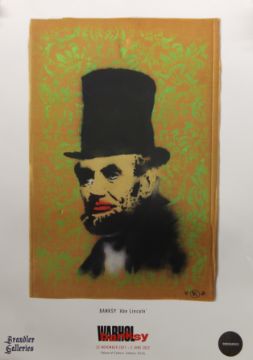

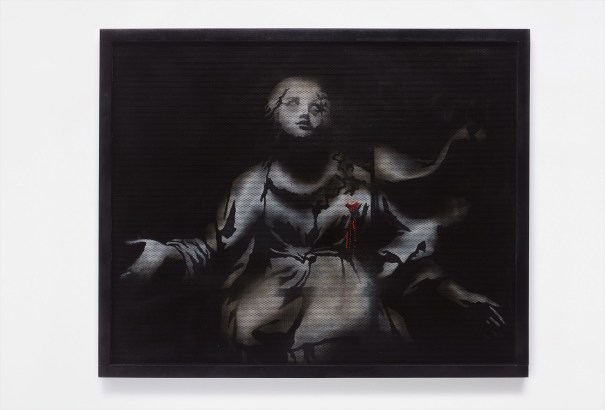
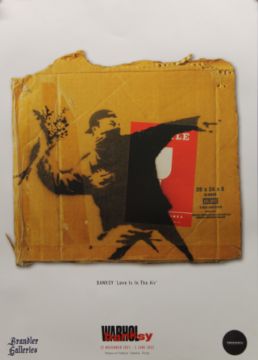
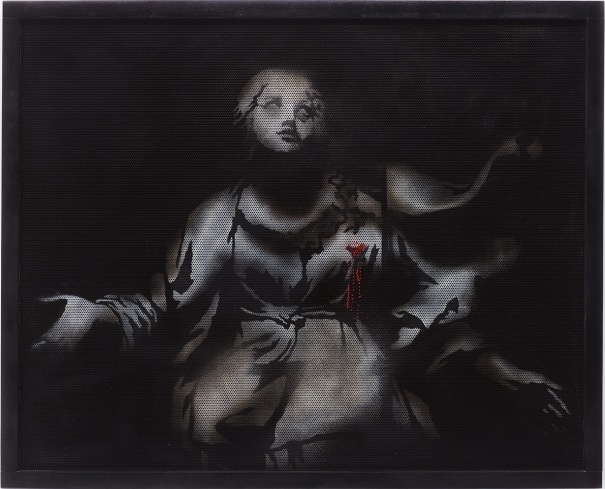
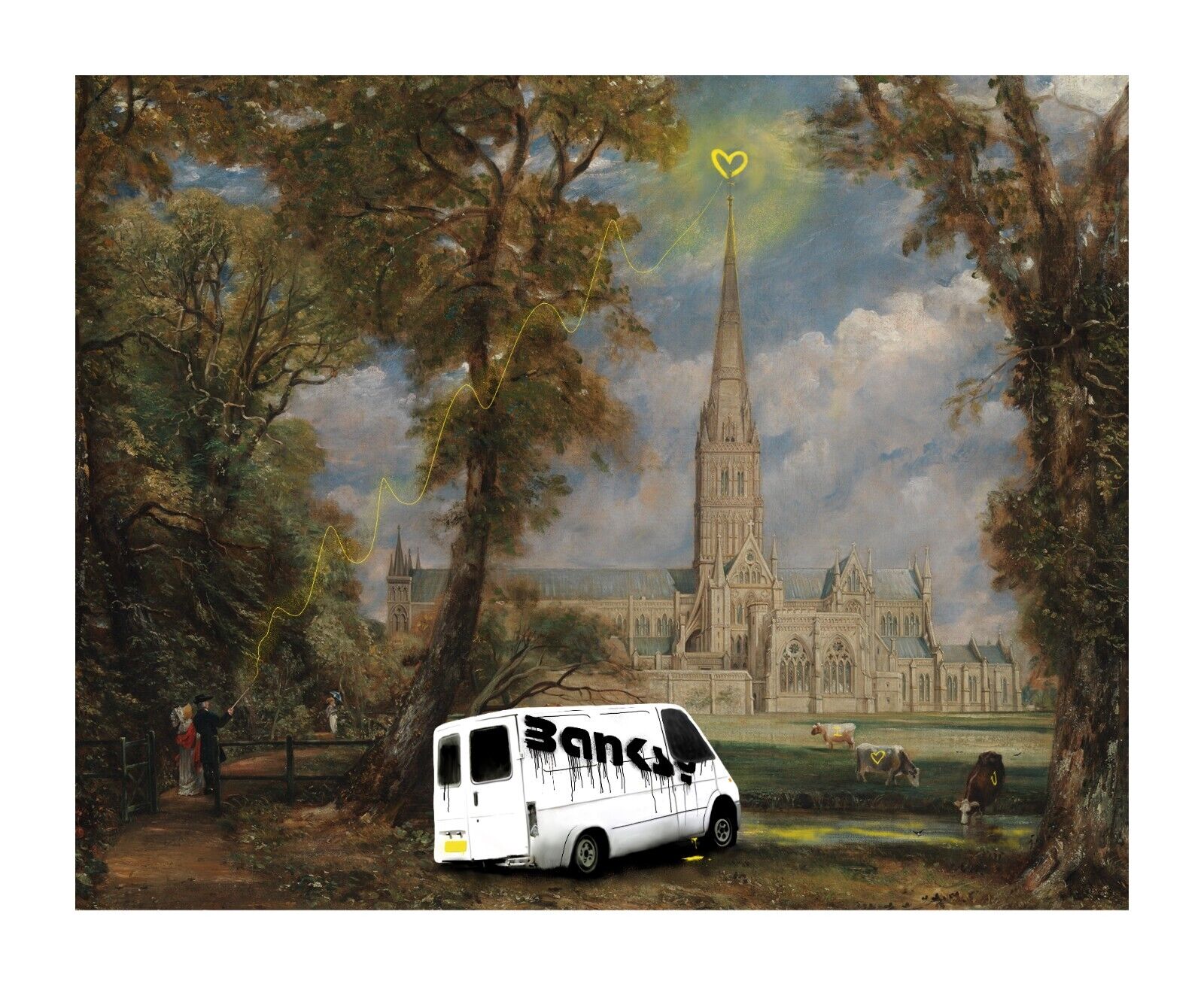

Try LotSearch and its premium features for 7 days - without any costs!
Be notified automatically about new items in upcoming auctions.
Create an alert